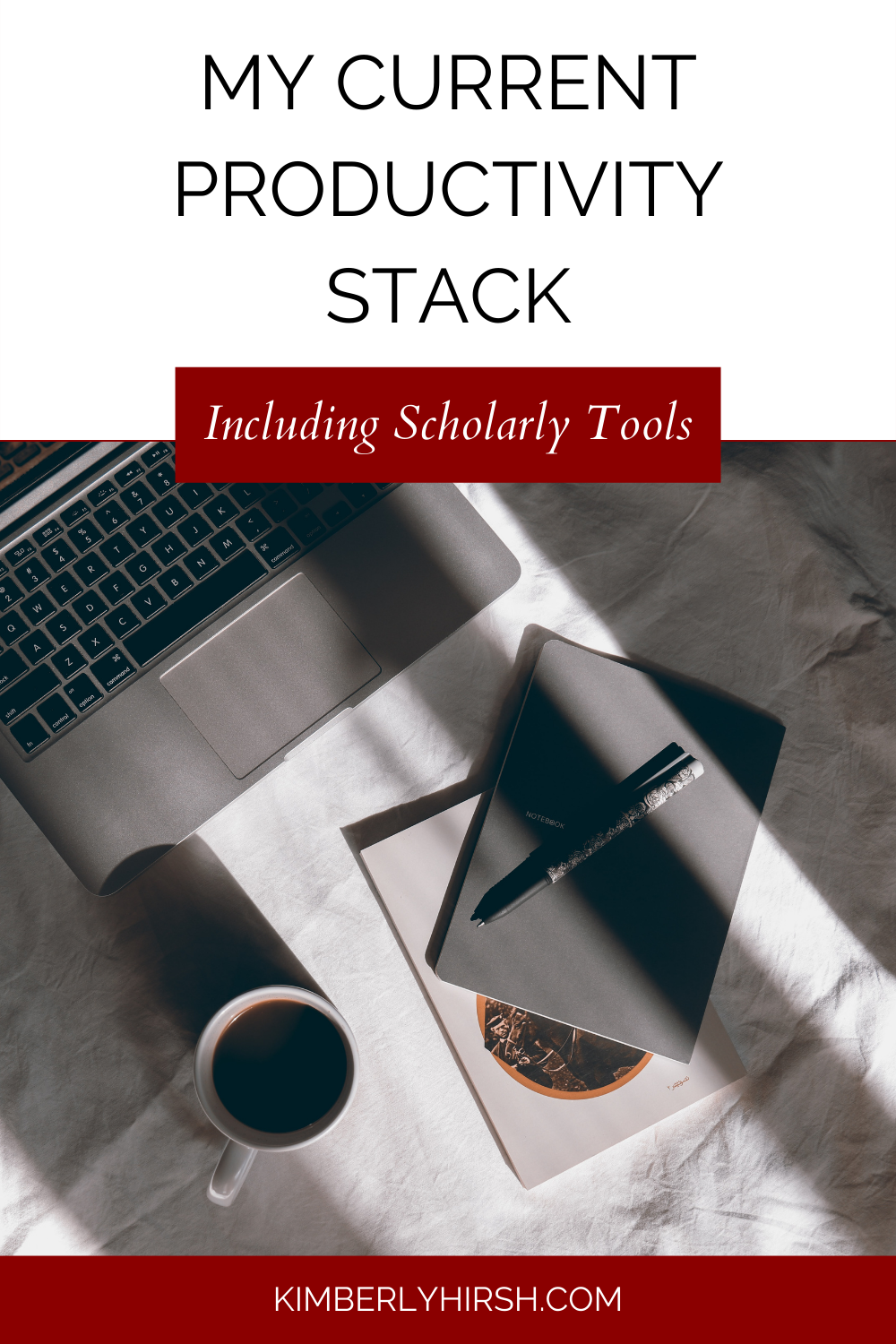I am a productivity hobbyist and have a bad habit of chucking my whole system every once in a while to try and adopt somebody else’s from scratch. This never works, though, and I inevitably end up rebuilding my own Frankenstein’s monster of tools. I started feeling this itch again recently, and after briefly flirting with Tiago Forte’s PARA method, decided to go back to basics and look at what I already know works for me before spending a lot of time switching things up.
Personal Productivity
Here’s what I’m using right now. I based the list on what kind of things are in a productivity stack on this Pleexy blog post.
Personal Task Management
I don’t like using software for this. There’s something about the feeling of pen on paper that makes me prefer it intensely. It does mean that my tasks are not linked to relevant email messages, as Tiago Forte suggests they should be, but I can use email labels to hold things for later in a sort of David Alleny method with folders like Waiting For, Read/Review, and Reference.
So because I prefer to do task management on paper, I use the Bullet Journal method and its companion app. I do a pretty vanilla implementation of the core collections and add custom collections as appropriate.
The notebook I prefer is a large hardcover squared Moleskine/. I’m experimenting right now with the expanded edition, since I usually go through a couple notebooks a year. At first I didn’t like the added weight or feeling of it in my hand, but now I’m used to it and it doesn’t seem that different from the regular one.
The pen I prefer is the Pilot G2 07 in black.
I also use tabs with my notebook: 1” ones across the top to mark the future log, this month, this week, and today, and 2” ones down the side for collections.
Calendar
The Bullet Journal Method includes a way to calendar, and I do use it some. But I mostly use Google Calendar for this. It’s useful for collaboration - my colleagues and my husband all use Google Calendar, so it’s easy to schedule things with/for them this way. I also schedule a lot of recurring tasks and appreciate being able to search to see when something happened in the past.
Note taking
The Bullet Journal is great for note-taking, too, but I have a tendency to ignore notes once I get them on paper. For short notes that I want to be easily accessible, I use Google Keep. I use recurring reminders with these. For example, I have a list of all my meds and a recurring reminder to fill my cases with them, and a list that pops up every day of stuff M. needs to be ready to go to school.
Longer notes end up in my blog, which I host on Micro.blog, or in Google Docs. This is an area where I could grow. If I decide to really get into personal knowledge management, I’ll probably experiment with some other tools. I’ve tried Evernote and Notion in the past and neither of them is quite right for what I’d imagine doing.
Focus
I use Forest, but I use it pretty inconsistently. When I’m in flow, I don’t really need this kind of app. As I do more writing, though, I might use it more.
Time management
I could use Forest for this, too, and I might. So far I don’t do a lot of time tracking.
Habit tracker
These never work for me, so I don’t bother with one.
Automation
I don’t do this much, either. I like a bit of friction in my workflow. As I keep refining it, I may discover areas that could benefit from automation, though.
Scholarly Productivity
Scholarly productivity requires its own specialized set of tools. Here’s what I use.
Citation management and reading
I use Paperpile for both citation management and scholarly reading. It integrates seamlessly with Google Docs for writing. It has its own built-in reader interface available on web or mobile. It costs about $30/year and I love it. It has completely eliminated lots of document-syncing headaches I had in the past when I used Zotero.
Literature tracking and notes
I use the labels and folders in Paperpile, along with Raul Pacheco-Vega’s Conceptual Synthesis Excel Dump method for this. I track a given body of literature using a Notion spreadsheet I created. You can get it (pay-what-you-can starting at $0) here.
Keeping up with literature
I use a combination of Google Scholar alerts and journal alerts for this.
Mind-mapping
I use bubbl.us.
Writing pipeline
I track my writing pipeline in Notion, with a database that lets me view it as a list or as a kanban-board according to stage in the publication process. I have a pay-what-you-can (again, starting at $0) template you can download for that.
Revisions
I have a revisions database in Notion for each paper, as well. I haven’t made this available as a template yet, but I plan to soon. Sign up for my Newsletter if you want to find out when it goes live. It will be pay-what-you-can like the others.
Permissions
If you are using images from others’ work in scholarly publishing, you will need to obtain and track permission to use that work. I do that in a Notion database. You can get my template. (As always, pay-what-you-can, $0.)
Areas for growth
There are two big gaps in my productivity stack right now. One is the difficulty in serendipitously serving up notes to myself. The kinds of connections that build creativity aren’t readily available using Google Docs or Keep. I started to build a personal wiki for this purpose but I think the amount of labor required to keep it up was too high. I’ll probably play with Notion for this some more, but I might just keep putting stuff on my website and occasionally scrolling through categories there to find connections.
The other big gap is REVIEW. I don’t have a solid review process. I’ve tried timers and time blocking and so far they haven’t worked for me. But I know all of this would work much better for me if I dedicated the time to review it, so I will keep working on figuring that out.
I hope it’s been helpful for you to read about my productivity stack. What’s in yours?



